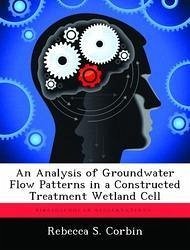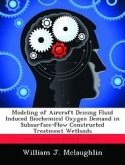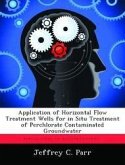This research effort analyzed groundwater flow paths within a treatment wetland constructed to degrade tetrachloroethylene (PCE) in groundwater. The treatment cell is a vertical flow wetland that allows the water to flow from the bottom to the surface breaking down PCE and daughter products. The method of conducting this research included collecting field data of hydraulic head contours nested piezometers and collecting data from sampling wells to determine hydraulic conductivities in the wetland. The field data was used to create a numerical computer model to determine groundwater flow patterns. The field data and the model demonstrate that there are areas in the wetland with flow velocities as low as 0.0019 m/day and as high as 2.779 m/day. The computer model also shows residence times of water particles traveling from the bottom of the wetland cell to the surface water varying from lt; 1 day, to over 1000 days.
Hinweis: Dieser Artikel kann nur an eine deutsche Lieferadresse ausgeliefert werden.
Hinweis: Dieser Artikel kann nur an eine deutsche Lieferadresse ausgeliefert werden.








